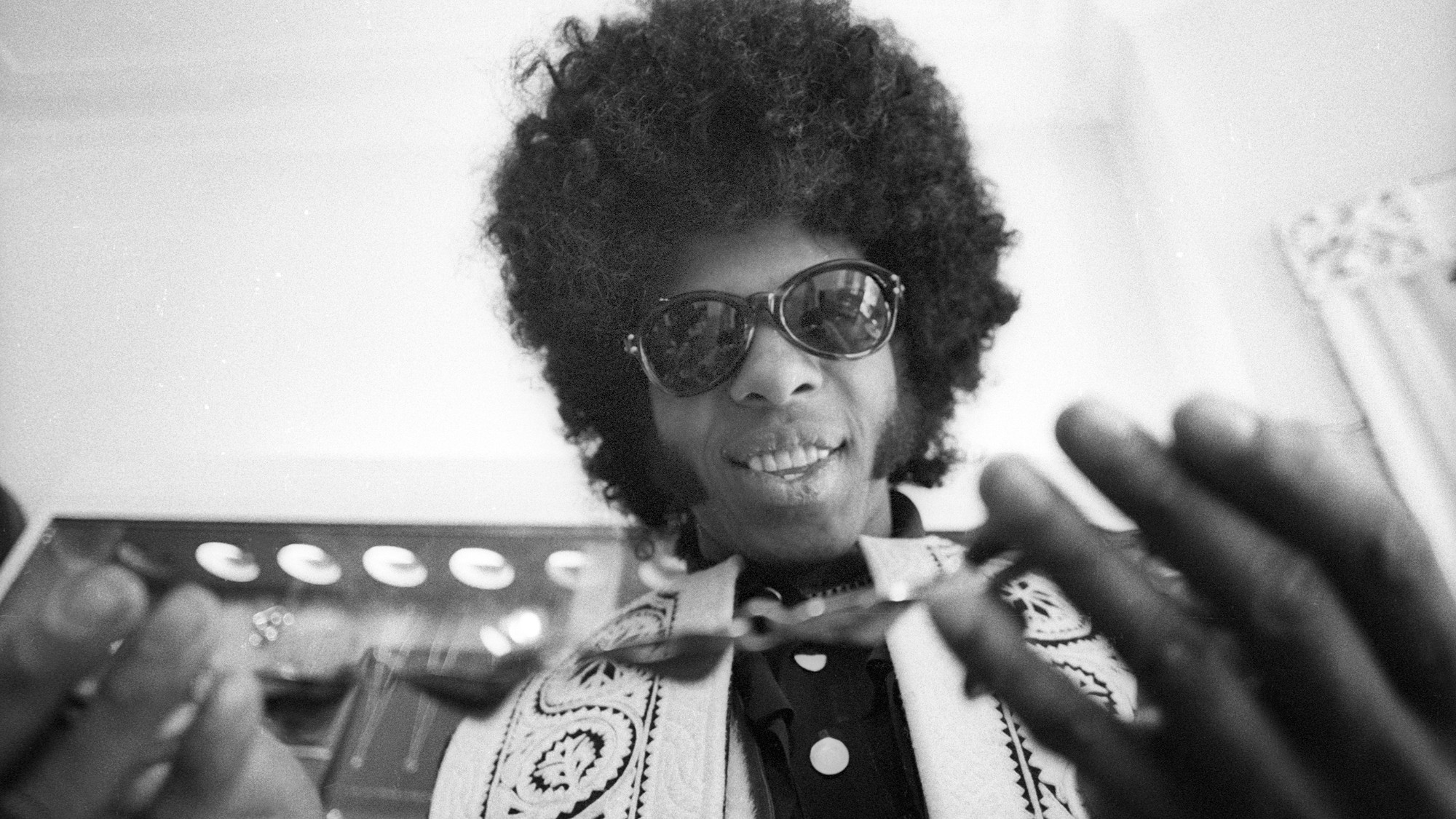Sly Stone: The funk-rock visionary who became an addict and recluse
Stone, an eccentric whose songs of uplift were tempered by darker themes of struggle and disillusionment, had a fall as steep as his rise

Sly Stone was a musical alchemist, combining soul, funk, and psychedelic rock with elements of gospel, jazz, and Latin music to create the new sound of the 1960s. With his prodigious Afro and platform boots—a look that one critic described as "the wildest pimp on the block"—he was an onstage dynamo as leader of the multiracial, mixed-gender band Sly and the Family Stone. From 1968 to 1971, the group scored hits with buoyant songs such as "Dance to the Music," "Everyday People," "Hot Fun in the Summertime," and "I Want to Take You Higher," and influenced artists such as Prince, Stevie Wonder, and Miles Davis. But Stone, an eccentric whose songs of uplift were tempered by darker themes of struggle and disillusionment, had a fall as steep as his rise. He descended into drug abuse and bankruptcy, spending most of his later years living in a camper van in Los Angeles. A New York Post reporter who located him in 2011 described him as paranoid and disheveled. "Tell everybody, please, to give me a job, play my music," he said then. "I'm tired of all this shit, man."
Raised in Vallejo, Calif., Sylvester Stewart was a musical prodigy who "started making music with his siblings as a child," said Rolling Stone. Their father, a janitor, was also a Pentecostal deacon, and the siblings sang gospel harmonies, recording their first single when Sylvester was 9. Adept at keyboards, guitar, bass, and drums, he studied music at a junior college and DJed at a local radio station under the name Sly Stone, breaking the R&B format by playing white acts like the Beatles along with soul and funk. He got a job as a staff producer for Autumn Records and "became a familiar voice in the Bay Area's music scene" before starting the band in 1966 that would become Sly and the Family Stone. They were men and women, black and white—and two were Sly's siblings.
Their 1967 debut album "vanished without a trace," said The Telegraph (U.K.). Prodded by his label to make something more commercial, Stone released Dance to the Music, an "irresistibly pro-pulsive funk collage" whose eponymous single shot to the Top 10. The band became known for high-octane live shows, and "a string of Top 20 successes followed." In 1969, they released a triumphant fourth album, said The Times (U.K.). "With its thrilling mix of rousing horns, acid-rock guitars, and funky bass lines," Stand! yielded four hits, including the smash "Everyday People." The band's reputation soared further after their "ecstatic" 4 a.m. Woodstock performance, widely hailed as a festival highlight.
The Week
Escape your echo chamber. Get the facts behind the news, plus analysis from multiple perspectives.

Sign up for The Week's Free Newsletters
From our morning news briefing to a weekly Good News Newsletter, get the best of The Week delivered directly to your inbox.
From our morning news briefing to a weekly Good News Newsletter, get the best of The Week delivered directly to your inbox.
"Then it all started to unravel," said The Washington Post. Strung out on cocaine and PCP, Stone missed a third of his shows in 1970. They all moved into a Beverly Hills mansion where recording sessions became "nonstop parties," with a drug-addled Stone flanked by "mobsters doubling as bodyguards." Stone "obsessively" overdubbed and erased tracks, degrading the master tape—allegedly, he would often tell a girl she could record backing vocals and then, once he'd bedded her, tape over her track. The result, There's a Riot Goin' On (1971), had a "bleak, dissonant" sound, said the Los Angeles Times. It "was the last significant music Stone released." He grew more isolated and erratic, and in 1974 married his 19-year-old girlfriend onstage at Madison Square Garden—she promptly divorced him, claiming abuse. Stone alternated drug arrests with stints in rehab and disappeared from the public eye.
In later years he "performed intermittently, and often bizarrely," said The New York Times. He surfaced at the 2006 Grammys sporting a "towering bleach-blond Mohawk," playing keyboards on "I Want to Take You Higher" but wandering offstage mid-song. In a shambolic 2010 appearance at Coachella, he told the audience he'd been kidnapped and would sue his manager. But in recent years "his musical legacy was fortified" when Questlove featured him in a 2021 documentary; another film followed this year. Finally drug-free, Stone moved into a house, wrote a memoir, and passed the time listening to records. Health problems had stopped him from recording, he said in 2023. But they "haven't stopped me from hearing music."
A free daily email with the biggest news stories of the day – and the best features from TheWeek.com
-
 5 hilariously slippery cartoons about Trump’s grab for Venezuelan oil
5 hilariously slippery cartoons about Trump’s grab for Venezuelan oilCartoons Artists take on a big threat, the FIFA Peace Prize, and more
-
 A running list of everything Trump has named or renamed after himself
A running list of everything Trump has named or renamed after himselfIn Depth The Kennedy Center is the latest thing to be slapped with Trump’s name
-
 Do oil companies really want to invest in Venezuela?
Do oil companies really want to invest in Venezuela?Today’s Big Question Trump claims control over crude reserves, but challenges loom
-
 Avatar: Fire and Ash – third instalment feels like ‘a relic of an earlier era’
Avatar: Fire and Ash – third instalment feels like ‘a relic of an earlier era’Talking Point Latest sequel in James Cameron’s passion project is even ‘more humourless’ than the last
-
 The Zorg: meticulously researched book is likely to ‘become a classic’
The Zorg: meticulously researched book is likely to ‘become a classic’The Week Recommends Siddharth Kara’s harrowing account of the voyage that helped kick-start the anti-slavery movement
-
 The Housemaid: an enjoyably ‘pulpy’ concoction
The Housemaid: an enjoyably ‘pulpy’ concoctionThe Week Recommends Formulaic psychological horror with Sydney Sweeney is ‘kind of a scream’
-
 William Nicholson: a ‘rich and varied’ exhibition
William Nicholson: a ‘rich and varied’ exhibitionThe Week Recommends The wide-ranging show brings together portraits, illustrations, prints and posters, alongside ‘ravishing’ still lifes
-
 Oh, Mary! – an ‘irreverent, counter-historical’ delight
Oh, Mary! – an ‘irreverent, counter-historical’ delightThe Week Recommends Mason Alexander Park ‘gives the funniest performance in town’ as former First Lady Mary Todd Lincoln
-
 The ultimate films of 2025 by genre
The ultimate films of 2025 by genreThe Week Recommends From comedies to thrillers, documentaries to animations, 2025 featured some unforgettable film moments
-
 Into the Woods: a ‘hypnotic’ production
Into the Woods: a ‘hypnotic’ productionThe Week Recommends Jordan Fein’s revival of the much-loved Stephen Sondheim musical is ‘sharp, propulsive and often very funny’
-
 The best food books of 2025
The best food books of 2025The Week Recommends From mouthwatering recipes to insightful essays, these colourful books will both inspire and entertain